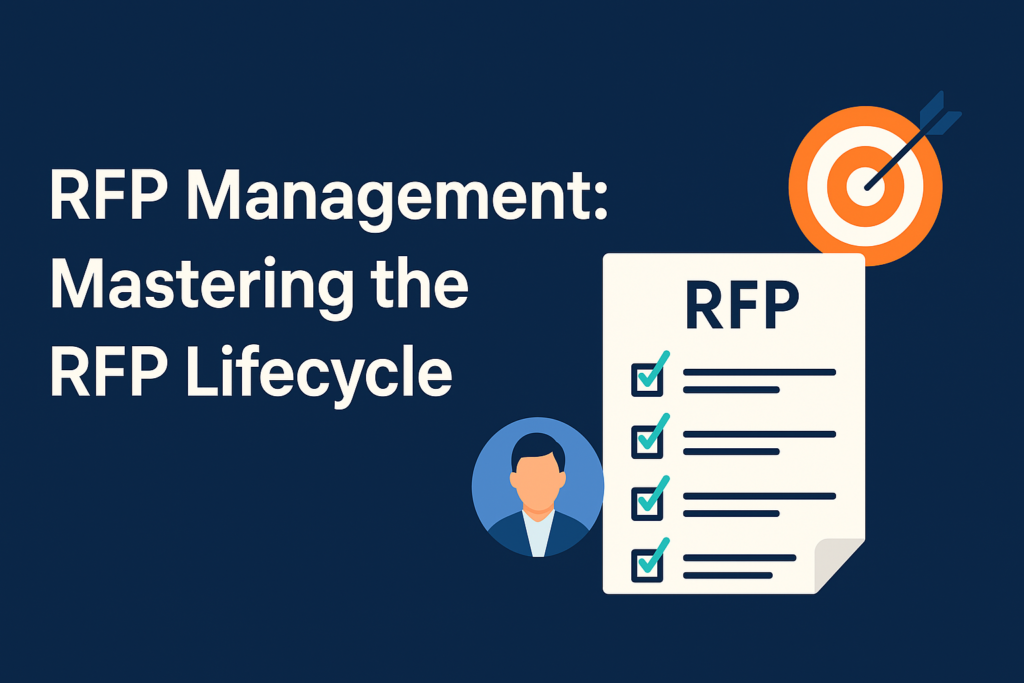Adopting Artificial Intelligence (AI) is transforming how companies compete and succeed. We highlight why getting team members and leaders on board is crucial. And examine real cases, provide practical tips for adopting AI, and explore the benefits it brings.
Defining Use Cases
Every company has its own unique experience using AI models like Generative Artificial Intelligence (GenAI). Let’s dive into an inspiring example of an organization that effectively defined their AI strategy. In today’s market, there’s a lot of hype surrounding AI. Companies that clearly identify and define problems where AI can provide solutions are achieving significant success.
A Well-Defined Example:
In our Optimize24 webinar, Steve Skeldon from Chickasaw Nation Industries shared his experiences with GenAI. Steve, the Capture Manager at Chickasaw Nation Industries, has successfully led virtual proposal teams across diverse international locations. These include Southwest Asia to Korea, as well as multiple CONUS teams in various time zones. Recently, Steve assumed a prestigious role as a Member of the Board of Directors at APMP. This showcases his commitment to professional growth and leadership within the industry. He began experimenting with ChatGPT but had to stop due to proprietary concerns. This led him and his team to create a “wishlist” of use cases for AI technology.
Steve’s Wishlist (Short-Term and Long-Term Goals):
Short-Term Goals:
- Document Synopsis – Use AI models to generate concise summaries (3-4 paragraphs) of proposals, statements of work, and other opportunity documents.
- Baseline Content Generation – Automatically create initial drafts for various pieces of content using Large Language Models (LLMs), freeing up time for human experts.
Long-Term Goals:
- Proposal Quality Enhancement – Train LLMs on tailored proposal content and expertise to avoid generic responses.
- Past Performance Analysis – Analyze new opportunities against past performance data, identifying relevant successes to inform approaches for new ventures.
- Competitive Benchmarking – Use AI models trained on broader market datasets to predict competitor behaviour in opportunities.
- Opportunity Prioritization – Teach LLMs to analyze publicly available information (e.g. SAM and GovWin) to generate a prioritized list of promising opportunities.
The Result:
The short-term goals align well with the current capabilities of GenAI. However, Steve’s long-term objectives necessitate a more advanced tool. Moving forward, the focus should be on training LLMs with specialized content from top proposal experts.
This approach ensures that the models provide valuable insights and innovative ideas rather than regurgitating generic information. The true potential of LLMs lies in their ability to analyze new opportunities in the context of historical performance data, enabling the identification of past successes most relevant to future project strategies. This enhances the decision-making process for upcoming ventures.
Empowering Leadership With AI
AI adoption requires leaders to weigh the benefits against potential drawbacks. Deciding whether to use AI involves trade-offs. On one hand, AI can enhance efficiency and convenience. On the other hand, it may lead to overreliance or privacy concerns. Striking the right balance requires thoughtful consideration.
- Be Curious – To successfully adopt GenAI, you need to understand its benefits and risks. Do we have the right resources and processes to review it carefully?
- Be Mindful – New tools don’t fix cultural issues overnight. Approach AI adoption thoughtfully by defining the underlying issue you’re trying to solve. Then you can assemble a balanced team to tackle onboarding challenges.
- Be Prepared – Before adopting AI, ensure clarity around the budget (if any). Set realistic expectations by being upfront about limitations. Develop strategies to manage both personal and team anxieties surrounding the new tool.
- Be Powerful – When faced with uncertainty, it’s easy to bury our heads in the sand. Instead, engage with people who share similar interests. Continue having open conversations about AI even if your company isn’t implementing it soon. To make informed choices, consider the long-term effects, ethical implications, and societal impact of AI on work well-being. The value of AI lies in its capabilities and how responsibly we integrate it.

Strategies for Team Buy-In
To foster AI acceptance across proposal teams, we need to explore the impact of AI on productivity, efficiency, and quality. It’s especially important to sell these benefits to both leadership and team members.
- Build Task Forces – Create small task forces to track progress and report monthly. This ensures clarity and commitment from leadership.
- Promote Conversations within Professional Organizations – Join professional organizations like APMP to share experiences, learn from peers, and gain valuable insights.
- Understanding Boundaries – When advocating for AI, avoid generic statements. Instead, focus on data that demonstrates efficiency gains or improved quality output.
- Drive Data over Platitudes – Show leadership the facts about how AI can improve proposal hours compared to past results. As Uniqueka Walcott of AECOM advises: “It’s really about understanding your audience when you bring the facts. Which facts do they care about?”
- Report ROI Metrics – Quantify benefits by sharing data on improved quality, productivity, and efficiency gains.
- Highlight Team Benefits – Communicate tangible benefits to team members such as time savings (12% less work) and emphasis on work-life balance.
- Champion Consistent Quality – AI can ensure consistent quality across different business units. Imagine marketing and technical teams working together seamlessly.
Transparent Communication is Key
Successful AI tool adoption requires a thoughtful approach. To succeed in AI tool adoption:
- Communicate the rollout well in advance.
- Offer demos, Q&A sessions, and segmentation into smaller pilot groups to avoid overwhelming employees.
- Ensure the tool aligns with your company’s needs.
- Be aware of potential biases introduced by AI.
- Don’t Overload. Avoid offering too many AI tools. Instead, focus on understanding team goals and identifying the best solutions that address them.
In short, AI offers a trifecta of benefits for buy-in—increased productivity, improved efficiency, and enhanced consistent quality. When presenting these advantages to leadership, tailor your message to their priorities. That could be the bottom line, shareholder expectations, or company success holistically.
“It's really about understanding your audience when you bring the facts. Which facts do they care about?”
Uniqueka Walcott, Proposal Manager, AECOM
Train Your Team
To get your team to effectively use AI tools in Business Development (BD), follow these tips:
- Stay Up to Date – Attend industry conferences, participate in roundtable discussions, and stay informed about AI advancements.
- Ask the Right Questions – Understand what you need from an AI tool and ask questions that get you the right answers.
- Get Better at Prompting – Enhance your outcomes by refining your prompts and optimizing your interactions with AI tools through training, hands-on practice, or exploring expert tutorials.
- Cross-Functional Sharing – Collaborate with colleagues in different functions, sharing insights and best practices on AI adoption.
Challenges? No Problem!
When implementing AI tools:
- Focus on Specific Tasks – Identify specific tasks where AI can make a difference.
- Leverage Existing Tools – Integrate AI incrementally based on specific use cases rather than adopting a blanket approach.
- Address Varying Needs – Recognize that different teams have varying needs, so focus on solving specific problems.
By following these tips and being flexible, you can overcome challenges and successfully implement AI tools for your team.
"One size doesn't fit all the teams for all the companies. So, focus on specific tasks. One of the important things is some companies might have put basic tools – like SharePoint – into a workflow."
Karthik Koutharapu, APMP HQ Board of Director
Bringing AI into your proposal process can change the way your company works, making tasks faster and more efficient. By creating AI champions within your team and getting support from leadership, you can ensure a smooth and successful adoption.
This blog has shown how to define clear use cases, empower your leadership, and get team buy-in. We’ve also covered the importance of leadership support, addressing any concerns, and fostering a culture of learning and innovation.
AI is not just a tool — it’s a partner that can help your team work smarter and stay competitive.
"You need to be curious. You need to be mindful. You need to be prepared, and you must be powerful."
Uniqueka Walcott, Proposal Manager, AECOM






